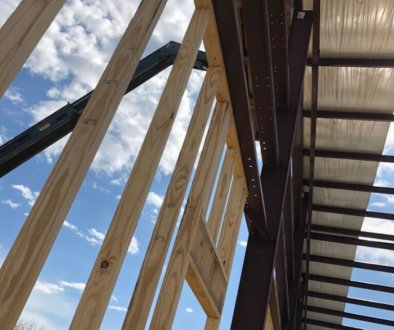Smart HVAC Systems
 Across America, companies and consumers are in search of solutions to save energy and ultimately costs. HVACR is a $200 billion a year business as well as the second largest consumer of energy within the United States.
Across America, companies and consumers are in search of solutions to save energy and ultimately costs. HVACR is a $200 billion a year business as well as the second largest consumer of energy within the United States.
Eighty percent of the buildings that we are going to be operating on for the subsequent twenty years are the ones that already exist now. The HVACR industry’s future lies in retrofitting the present grid with additional energy efficient technologies.
HVACR Regulations & Requirements
Regulations are increasing efficiency requirements, resulting in a lot more use of variable speed, multi-stage – i.e. extra complicated, equipment. Far more systems are being connected to the Smart Grid and homeowners are looking for remote access capabilities. This has resulted in the HVACR market seeing elevated pressure to create the transition from legacy 24Vac control wiring to equipment with serial communications. These “Smart” HVAC systems, like the Climate Talk Alliance take the complexity out of the installation and give meaningful diagnostic facts to help prevent and/or troubleshoot equipment troubles.
Educators and trainers need to teach students/technicians the best way to competently install intelligent HVAC Systems without turning them into IT experts.
The HVACR market is undergoing important changes and there are more to come. Within the future, we will see far more modular and packaged systems rather than “central” systems all requiring extra technicians for installation and maintenance. This will dramatically change the way we train our workforce.
Job Growth
The Department of Labor estimates that jobs inside the sustainable fields will grow by thirty million over the next twenty years. America’s movement towards energy efficiency has never been so closely tied to economic opportunity. Even so, with new opportunities come new challenges. HVACR programs must now learn to integrate power auditing into their curriculum.
An energy auditor has the capability to perform detailed building inspections and make cost-effective recommendations about enhancing a building’s power efficiency. In turn, power auditing can generate jobs for; plumbers, electricians, carpenters, insulators, and mostly HVACR service technicians.
Education
To be able to incorporate energy auditing into a coaching plan, educators and trainers need to become familiar with green concepts, terminology, thermal imaging and blower door testing. Energy usage within the property is tied to how airtight a property is, as well as if ductwork is outside the thermal envelope, how tight the ductwork is, and so on. HVACR educators and trainers need to recognize what a blower door is, what a duct leakage tester is, ways to use each device and how these details are significant when determining HVAC system sizing for new and retrofit systems.
To add to the daunting job of training HVACR service technicians within the twenty-first century, schools are now asking teachers to utilize distance learning applications that enable students to take general education classes online, access their electronic textbooks, simulation software program, etc. Teachers now need to generate hybrid programs that blend hands-on understanding conducted on campus with distance studying carried out at home.
No matter what role you play in the HVACR business, everyone plays a role in training our future workforce.




